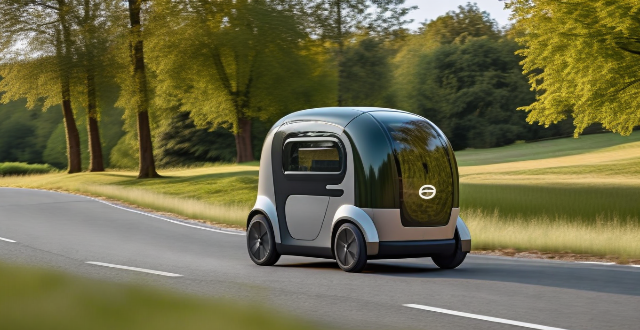This article provides an overview of Compound Hybrid Electric Vehicles (CHEVs), which are a unique type of hybrid vehicle that combines the features of both conventional hybrid electric vehicles (HEVs) and plug-in hybrid electric vehicles (PHEVs). The article discusses the design and operation of CHEVs, including their main components such as the internal combustion engine, electric motor, battery pack, and transmission. It also highlights the benefits of CHEVs, such as improved fuel efficiency, lower emissions, enhanced performance, and greater flexibility for drivers. The article concludes by stating that CHEVs have the potential to revolutionize transportation and that we can expect to see more of them in the future as advancements in battery technology continue.

Introduction to CHEV (Compound Hybrid Electric Vehicle)
A Compound Hybrid Electric Vehicle (CHEV) is a unique type of hybrid vehicle that combines the features of both a conventional hybrid electric vehicle (HEV) and a plug-in hybrid electric vehicle (PHEV). It offers several advantages over traditional hybrid vehicles, including increased fuel efficiency, lower emissions, and improved performance. In this article, we will explore the key aspects of CHEVs, including their design, operation, and benefits.
Design and Operation
CHEVs are designed to operate in two different modes: as a conventional HEV and as a PHEV. This flexibility allows them to adapt to various driving conditions and optimize their performance accordingly. The main components of a CHEV include:
- Internal Combustion Engine (ICE): The ICE serves as the primary power source for the vehicle when operating in HEV mode. It generates electricity to charge the battery pack and provides additional power when needed.
- Electric Motor: The electric motor is responsible for propelling the vehicle in PHEV mode. It draws energy from the battery pack and converts it into mechanical motion.
- Battery Pack: The battery pack stores energy from both the ICE and external sources (such as charging stations). It powers the electric motor during PHEV mode and supplements the ICE during HEV mode.
- Transmission: The transmission connects the ICE and electric motor to the wheels, allowing for smooth transitions between power sources.
Benefits of CHEVs
CHEVs offer several benefits over traditional hybrid vehicles, including:
- Improved Fuel Efficiency: By combining the features of both HEVs and PHEVs, CHEVs can achieve higher fuel efficiency than either type alone. They can travel longer distances on electric power alone, reducing the need for frequent refueling.
- Lower Emissions: CHEVs produce fewer emissions than traditional gasoline-powered vehicles, contributing to cleaner air and reduced environmental impact.
- Enhanced Performance: With the ability to switch between HEV and PHEV modes, CHEVs can provide better acceleration and overall driving performance than traditional hybrids.
- Flexibility: CHEVs offer drivers more flexibility in how they use their vehicles. They can choose to drive in PHEV mode for short trips or switch to HEV mode for longer distances.
Conclusion
In conclusion, CHEVs represent an innovative approach to hybrid vehicle technology that combines the best features of both HEVs and PHEVs. By offering improved fuel efficiency, lower emissions, enhanced performance, and greater flexibility, CHEVs have the potential to revolutionize the way we think about transportation. As advancements in battery technology continue to improve, we can expect to see more CHEVs on our roads in the future.